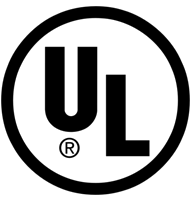-
 206-310-3624
206-310-3624
-
 support@pcbinternational.com
support@pcbinternational.com
IPC classifications describe industry-set standards of quality in PCB design, manufacturing and assembly. PCBI manufactures a minimum of IPC Class 2 PCBs and can satisfy requirements for class III manufacturing. Class 2 includes most industrial products and consumer electronics that require longer life cycles, while still allowing for minor cosmetic imperfections that do not compromise mechanical or electrical functionality.
Class 2 is the most common choice in PCB fabrication and has the most balance in terms of cost and performance expectations.
Class 3 manufacturing comes at a premium cost for good reason. Products falling into this category require longer operational life cycles, on-demand performance, high-reliability and have the most controlled manufacturing tolerances and specifications of all three classes. Aesthetic defects that do not affect electrical or mechanical functionality that can meet Class 2 standards would fail inspection for Class 3. You'll find Class 3 PCB in industries such as flight, high-end medical equipment and automotive.
Multiple testing and inspection points throughout the manufacturing process drive up the cost in addition to slowing down production. The number of through-hole technology used in your design can also considerably slow the manufacturing process as Class 3 requires the vertical fill of the barrel at 75% (compared to 50% for Class 2).
Consider longer lead times if Class 3 requirements are necessary for your project.
The chart below breaks down the specific requirements to meet each standard. Contact us to learn more.
Common IPC-6012D/DS Requirement Differences Per Product Class
| Characteristic | Class 2 | Class 3 | Class 3A* | IPC 6012D/DS RequirementUOS** |
|
|---|---|---|---|---|---|
| Annular Ring External PTH | 90° Breakout Accepted Line width to meet Req. | 50 μm [0.00197 in.] min. 20%isolated area reductions due to | 50 μm [0.00197 in.] min. 20% isolated area reductions due todefects permitted. Tear Drops AABUS | Table 3-9 / 3.4.2 | |
| Annular Ring Internal PTH | 90° Breakout Accepted Line width to meet Req. | 25 μm [0.00098 in.] min. | 25 μm [0.00098 in.] min. | Table 3-9 / 3.6.2.1 | |
| Annular Ring, Unsupported Hole | 90° Breakout Accepted Line width to meet Req. | 150 μm [0.00591 in.] min. | 150 μm [0.00591 in.] min. | Table 3-9 / 3.2.4 | |
| Burrs and Nodules | Accepted if minimum hole diameter and copper thickness is met | Table 3-10 | |||
| Bow & Twist | Max. of 0.75% for Surface Mount Boards / 1.5% for all others | 3.4.3 | |||
| Cracks, Laminate | Cracks within and outside not > 80 μm [0.00315 in] | 3.6.2.4 | |||
| Cracks, Barrel / Corner | None Allowed | Table 3-10 | |||
| Cracks, External Foil | Allowed if not extended into plating | Table 3-10 | |||
| Cracks, Internal Foil | None Allowed | Table 3-10 | |||
| Dielectric Thickness/Spacing | 90 μm [0.00354 in.] min. unless specified | 3.6.2.17 | |||
| Lifted land (Visual) | None allowed on the delivered (non-stressed) printed board | 3.6.2.10 | |||
| De-wetting Solder Connection areas | 5% Max | 5% Max | None allowed* | 3.5.4.5 | |
| Conductors and planes are permitted | |||||
| Plating Thickness, Copper, Through, Blind, Buried Vias, >2 Layers, Average | 20 μm [0.00079 in.] min. | 25 μm [0.00098 in.] min. | 25 μm [0.00098 in.] min. | 3.6.2.11 Table 3-4 | |
| Plating Thickness, Copper, Through, Blind, Buried Vias, >2 Layers, Thin Areas | 18 μm [0.00071 in.] min. | 20 μm [0.00079 in.] min. | 25 μm [0.00098 in.] min.* | 3.6.2.11 Table 3-4 | |
| Plating Thickness, Copper, Through, Blind, Buried Vias, >2 Layers, Wrap | 5 μm [0.00019 in.] | 12 μm [0.00047 in.] | 12 μm [0.00047 in.] | 3.6.2.11 Table 3-4 | |
| Plating Thickness, Copper, Blind and Buried Microvias, Average | 12 μm [0.00047 in.] min. | 12 μm [0.00047 in.] min. | 20 μm [0.00079 in.] min.* | 3.6.2.11 Table 3-5 | |
| Plating Thickness, Copper, Blind and Buried Microvias, Thin Areas | 10 μm [0.00039 in.] min. | 10 μm [0.00039 in.] min. | 18 μm [0.00071 in.] min.* | 3.6.2.11 Table 3-5 | |
| Plating Thickness, Copper, Blind and Buried Microvias, Wrap | 5 μm [0.00019 in.] | 6 μm [0.00024 in.] | 6 μm [0.00024 in.] | 3.6.2.11 Table 3-5 | |
| Plating Thickness, Copper, Buried Via Cores (2 Layers), Average | 15 μm [0.00059 in.] min. | 15 μm [0.00059 in.] min. | 20 μm [0.00079 in.] min.* | 3.6.2.11 Table 3-6 | |
| Plating Thickness, Copper, Buried Via Cores (2 Layers), Thin Areas | 13 μm [0.00051 in.] min. | 13 μm [0.00051 in.] min. | 18 μm [0.00071 in.] min.* | 3.6.2.11 Table 3-6 | |
| Plating Thickness, Copper, Buried Via Cores (2 Layers), Wrap | 5 μm [0.00019 in.] | 7 μm [0.00027 in.] | 7 μm [0.00027 in.] | 3.6.2.11 Table 3-6 | |
| Nicks and Pinholes, Planes | Max. size is 1.0 mm [0.0394 in] with not more than 4 per side, per 625 sqcm [96.88 sqin] | 3.5.4.1 | |||
| Negative Etchback | 25 μm [0.00098 in.] | 13 μm [0.00051 in.] | None allowed* | 3.6.2.8 | |
| Positive Etchback | Between 5 μm [0.000197 in.] and 80 μm [0.00315 in.] with preferred depth 13 μm [0.000512 in.] |
Between 5 μm [0.000197 in.] and 40 μm [0.001574 in.] with preferred depth 13 μm [0.000512 in.]* |
3.6.2.6 | ||
| The combination of dielectric removal from etchback plus wicking allowance shall not exceed the sum of the maximum allowable etchback or smear removal and the maximum allowable wicking limits in *Table 3-10 and as depicted in Figure 3-15. |
|||||
| Surface Mount Lands | Defects along edge of land not > 20%; internal defects not > 10% | 3.5.4.2.1 | |||
| Defects internal to the land remain outside central 80% of the diameter. | |||||
| Plating Separation | None Allowed | Table 3-10 | |||
| Voids, Laminate | Voids within and outside thermal zone not > 80 μm [0.00315 in.] | 3.6.2.3 | |||
| Voids, Copper in Holes (Visual) | One per hole in not more than 5% of the holes | None allowed | None allowed at 3 diopters (approx. 1.75X)* | 3.3.3 Table 3-7 | |
| Voids, Final Finish Plating (Visual) | Three per hole in not more than 5% the holes | One per hole in not more than 5% of the holes | None allowed at 3 diopters (approx. 1.75X)* | 3.3.3 Table 3-7 | |
| Nail Heading | Acceptable - indicator of process variation - alert management | 3.6.2.19 | |||
| Inner layer Inclusions/Separations | None Allowed | Table 3-10 | |||
| Cap Plating of Filled Holes (Visual) | When cap plating of the filled holes is specified on the procurement documentation, plating voids exposing resin are not allowed, unless covered by solder mask. Must maintain structural integrity. |
3.5.4.8 | |||
| Cap Plating of Filled Holes Min. | 5 μm [0.00019 in.] | 12 μm [0.00047 in.] | 12 μm [0.00047 in.] | 3.6.2.11.2 Table 3-11 |
|
| Cap Plating of Filled Holes Depression – max. | 127 μm [0.005 in.] | 76 μm [0.0030 in.] | 76 μm [0.0030 in.] general areas 50 μm [0.0020 in.] in BGA areas |
3.6.2.11.2 Table 3-11 |
|
| Cap Plating of Filled Holes Protrusion – max. | 50 μm [0.0020 in.] | 50 μm [0.0020 in.] | 50 μm [0.0020 in.] | 3.6.2.11.2 Table 3-11 |
|
| Electrodeposited Copper Tensile Strength | > 248 Mpa [36,000 PSI] | > 248 Mpa [36,000 PSI] | > 275.8 Mpa [40,000 PSI] | 3.2.6.2 per IPC-TM-650 2.4.18.1 | |
| Electrodeposited Copper Elongation | > 12% | > 12% | > 18% | 3.2.6.2 per IPC-TM-650 2.4.18.1 | |
| *Requirements for Class 3A product are referenced in IPC-6012DS. | **UOS = Unless Otherwise Stated | ||||
| IPC 6012 Class Chart.doc | For Reference Only | Rev:13-Oct17 | |||
Email us for a fast, custom quote or try a quick quote online here.




